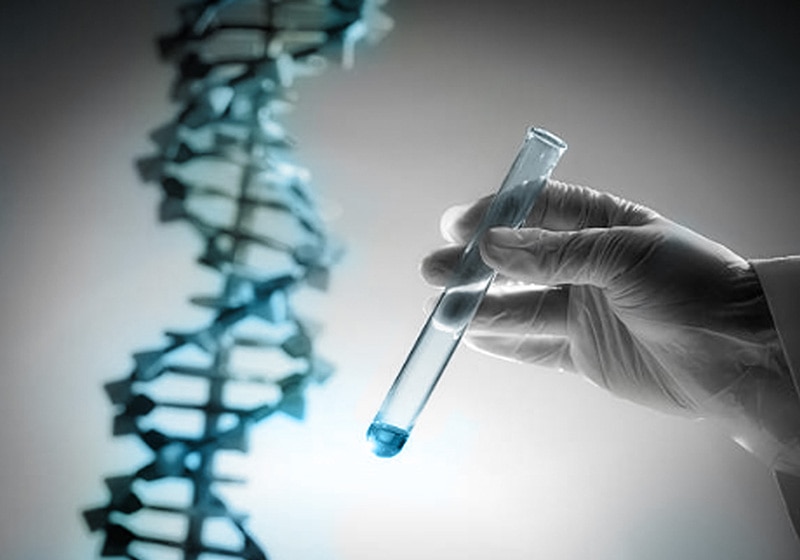Selecting a DNA Testing Kit

Thinking about learning more about yourself with a DNA testing kit? There are a few things to consider. From the type of test, to privacy, to what taking the test involves, here are a few of the top factors in choosing a DNA testing kit.
1. Type of Test. At-home DNA testing kits give you various DNA-based insights about yourself. If you’re looking for a DNA test that tells you more about your ancestors, there are three main types of DNA tests you can use: a Y-DNA test, a mitochondrial DNA test (also known as an mtDNA test), and an autosomal DNA test. An autosomal DNA test is the most information-rich—it can trace all of your family lines rather than just your mother’s line (like an mtDNA test) or your father’s line (like a Y-DNA test).
AncestryDNA® uses autosomal DNA testing. This is why you get such rich, deep content about your living relatives, as well as your ancestors.
2. Test process. Add additional information to narrow down searches. Not all DNA testing kits are equally easy to use. Some require a number of additional steps or costs for your initial test, including paying one price for the actual DNA test kit and an additional amount to activate it. This is not the case with a DNA test kit from AncestryDNA. When you order an AncestryDNA test, the price includes a DNA test kit and the lab processing fee. In each AncestryDNA test kit is a full set of instructions, a collection tube for your saliva (your DNA sample), and a pre-paid return mailer.
To take an AncestryDNA test, all you have to do is fill the test tube that comes in your DNA test kit with your saliva and mail it in with the pre-paid mailer. You’ll then receive your DNA test results online (typically in 6-8 weeks), via the free Ancestry® account you create when you activate your test.
3. What You Get. What you’re looking to discover from a DNA test clearly matters a lot when choosing a DNA testing kit. An AncestryDNA test can help you discover a more complete story of you—from your connections to over 2,700 places and people around the world (your origins results) to connections to living relatives in the world’s largest consumer DNA database.
Your ancestral regions, for example, could tell you that 34% of your DNA looks most like the DNA of people from France. This would appear in the test results displayed in your online AncestryDNA account as 34% France.
Your results could even be more specific, showing a DNA connection to an ancestral journey. For instance you may learn that one of your French ancestors came to the region of Acadia in Canada and then moved down to Louisiana as part of a mass migration.
In addition to an origins report, your AncestryDNA test results could also include AncestryDNA Matches. DNA matches are other AncestryDNA test takers who are genetically related to you and are displayed in your results according to how closely they are likely related to you.
DNA matching is an opt-in feature which allows you to make all sorts of interesting connections. For example, you could end up connecting with and visiting your long-lost family in Ireland. Or you could discover American Revolution participants likely in your family tree, thanks to a connection with an AncestryDNA match who has a publicly viewable family tree. With more than 10 million people who have taken AncestryDNA tests, there’s no telling what connections you might make.
4. Privacy. When you buy a DNA testing kit, one concern can be privacy. If you purchase a DNA test kit from AncestryDNA, know that AncestryDNA does not claim ownership rights in the DNA submitted for testing. You own your DNA. You can learn more about AncestryDNA and privacy by visiting the privacy center on Ancestry®.
5. Test Precision. If you’re in the market for a DNA testing kit that tells you more about your origins, one important thing to consider is the precision of the test. For example, AncestryDNA uses its patented Genetic Communities™ technology to give you insights you can’t get anywhere else. AncestryDNA draws on the power of millions of family trees in combination with the world’s largest consumer DNA database. This method allows you to not only learn where your ancestors came from but to see how they moved around their homeland and across the globe—in 25-year blocks, as far back as 1700.
You could learn, for example, that many people from the group your family came from moved from Donegal, Ireland to Chicago between 1850 and 1875, in the wake of the Irish Potato Famine. Or you could learn that your family may have joined others and moved from Louisiana to Chicago during the Great Migration. With AncestryDNA you could learn not only about your unique family story but also how the movements of your ancestors fit into the larger picture of human history.
If you are ready to join the millions who have already uncovered something new about themselves with an AncestryDNA test, order your AncestryDNA test kit today.